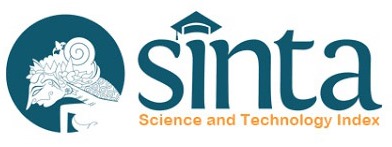Health Risk Assessment Related to Total Mercury (THg) Concentration in Clam (Periglypta crispata) from Kepulauan Seribu Regency, Indonesia
Abstract
Mercury (Hg) contaminated seafood can cause severe health problems if it is consumed regularly. Mercury is very dangerous for humans because it can damage or reduce the function of the central nervous system, blood composition, lungs, kidneys, and other vital organs. This metal can also cause birth defects in newly born babies. The objectives of this study were to determine the concentration of total mercury (THg) in clams (Periglypta crispata) collected from Kepulauan Seribu Regency and the safe amount per week for consuming them. The safe amount (kg per week) to consume this clam was calculated by the Maximum Tolerable Intake (MTI) method. Our results showed that the average concentration of THg in the clams was 0.18±0.07 mg/kg wet weight. Among the analyzed organs, THg accumulation was highest in the digestive tract tissues. The clams were still safe to be consumed by humans since the THg concentration in these clams has not exceeded the maximum limit of heavy metal in seafood (0.5 mg/kg) set by the government of Indonesia. The safe amount to consume these clams was 0.53 kg per week, to avoid the adverse effect of Hg to human health.
Keywords
health risk assessment, mercury, shellfish, Periglypta crispata
Full Text:
PDFDOI: https://doi.org/10.15578/squalen.435
Refbacks
- There are currently no refbacks.
ISSN : 2089-5690(print), E-ISSN : 2406-9272(online)
This work is licensed under a Creative Commons Attribution-NonCommercial-ShareAlike 4.0 International License.










